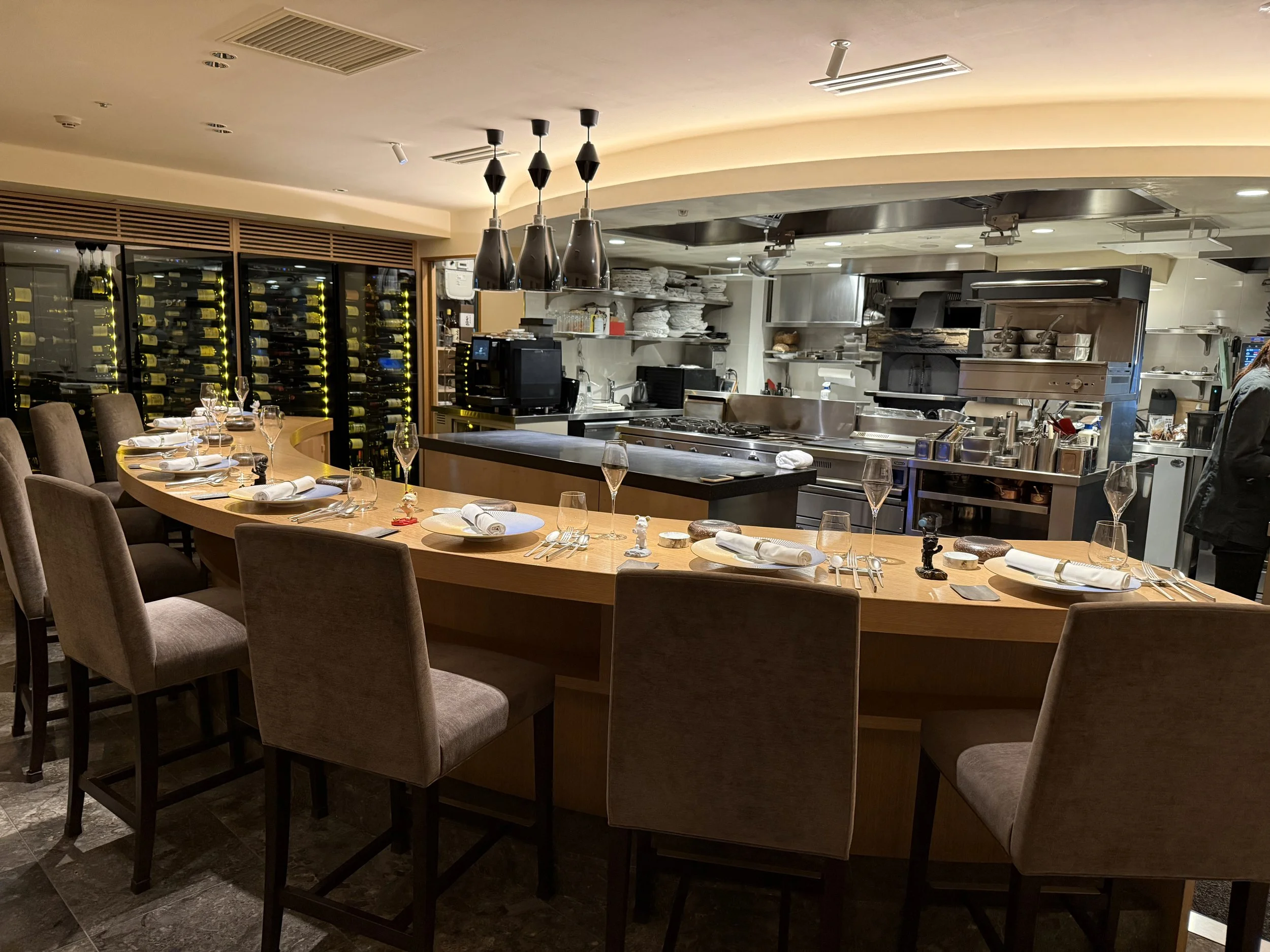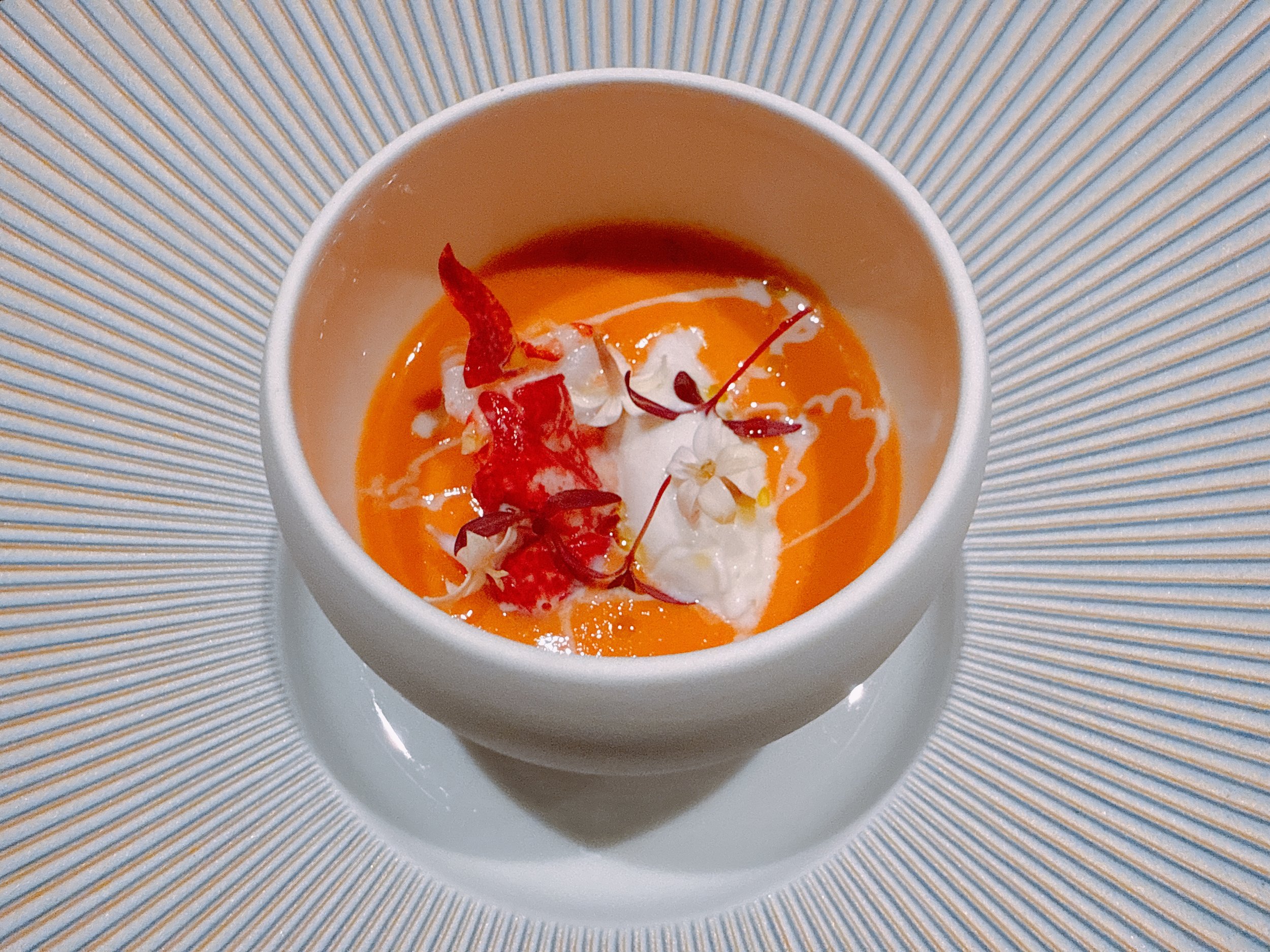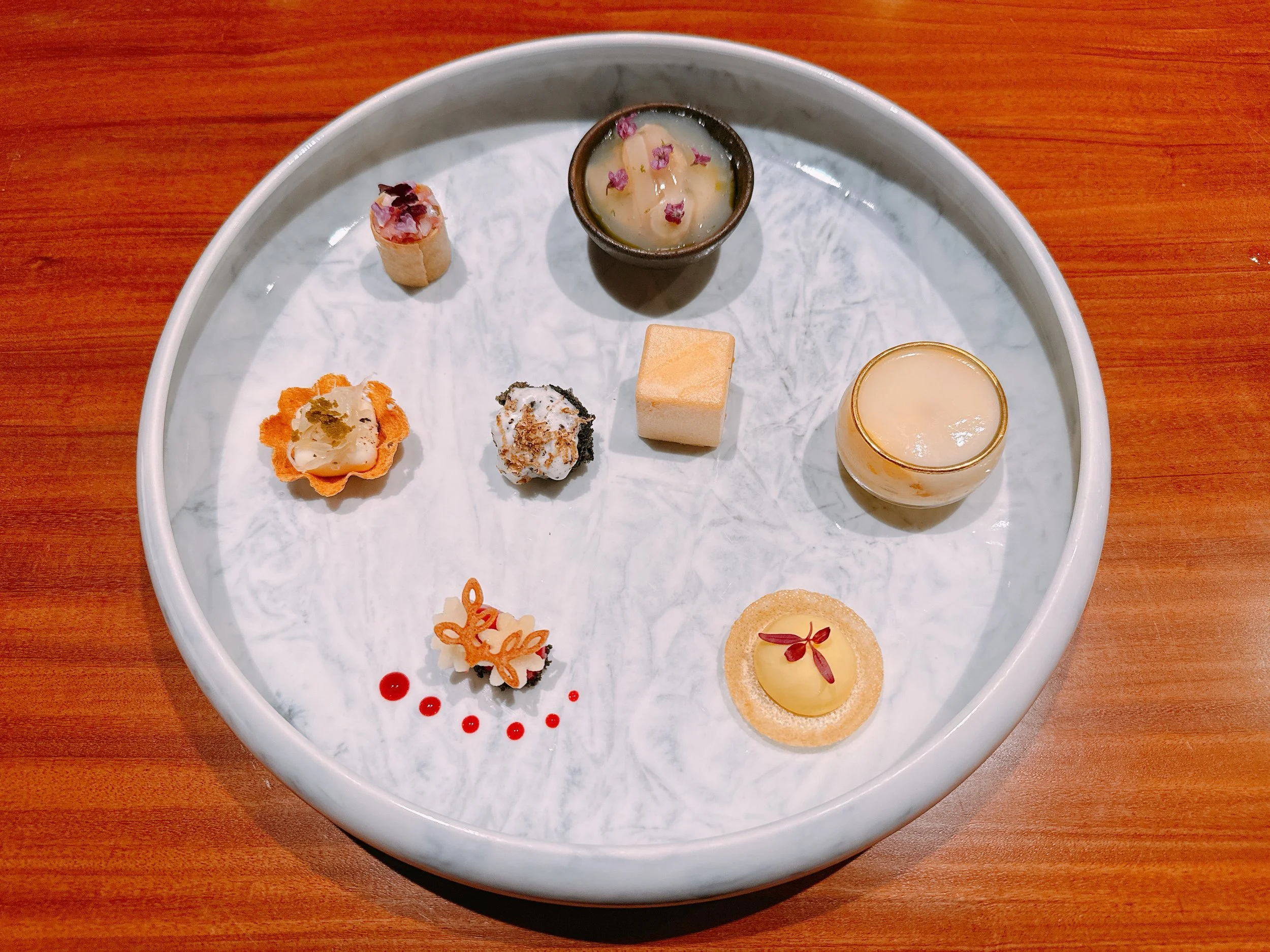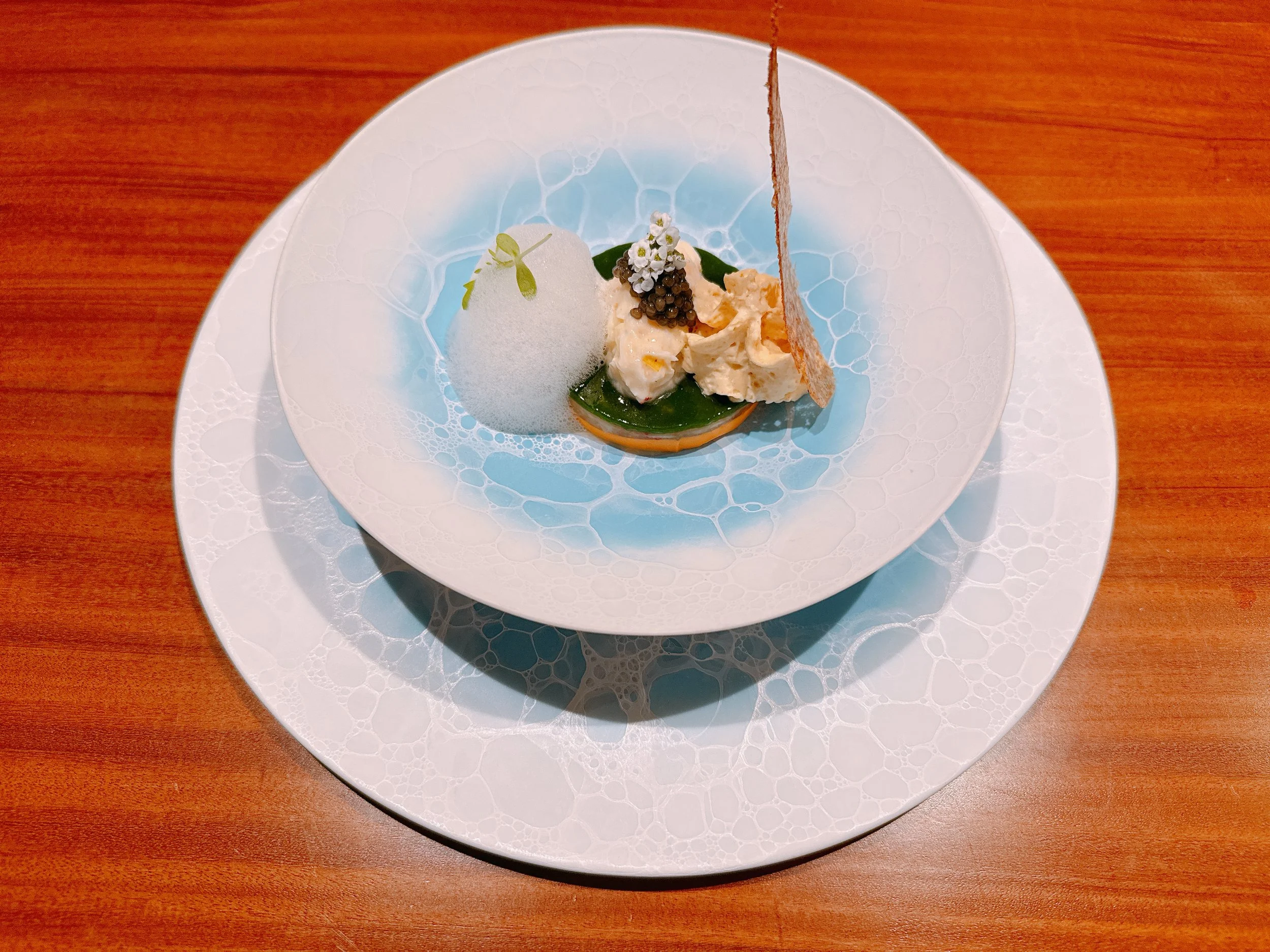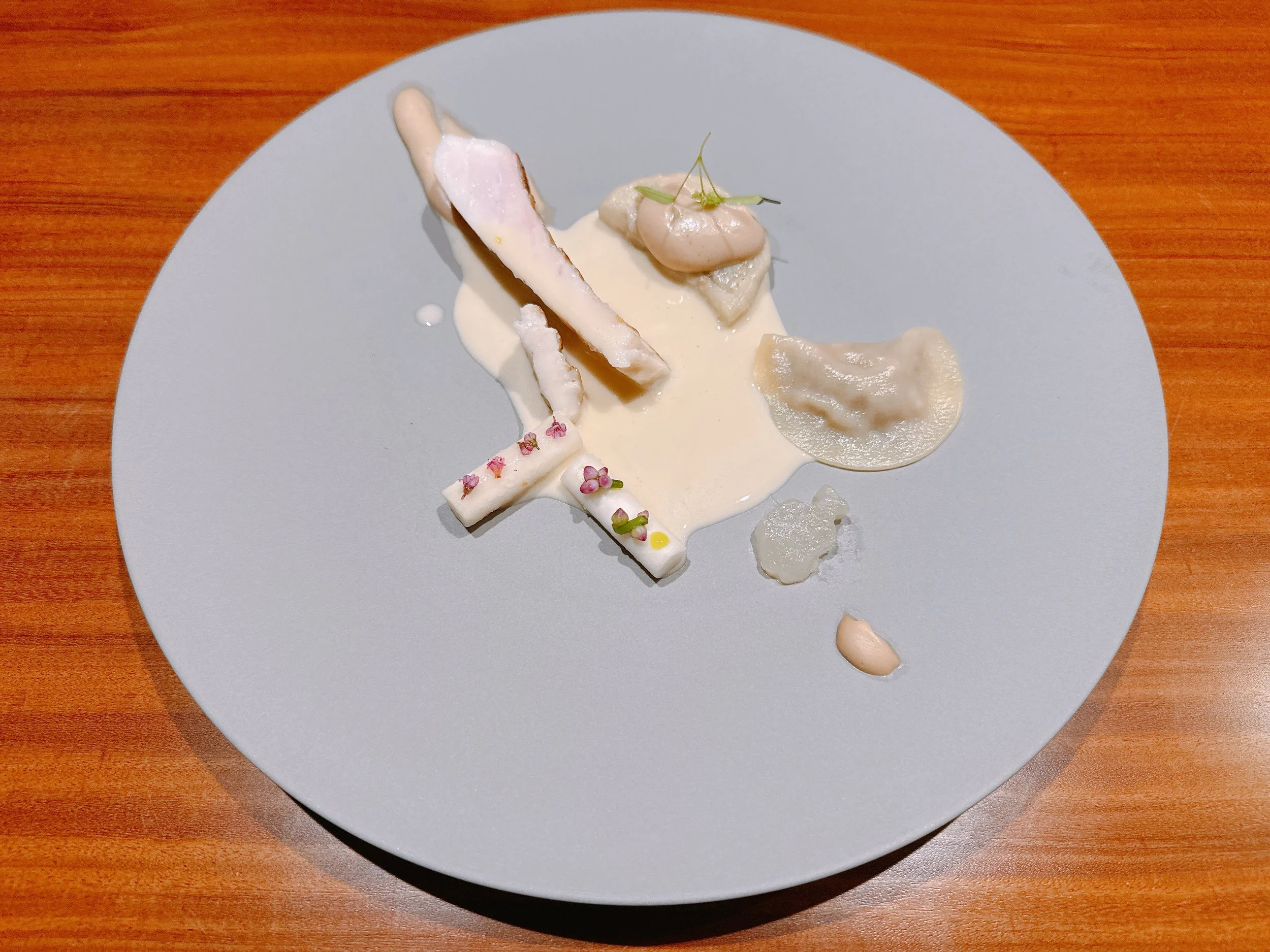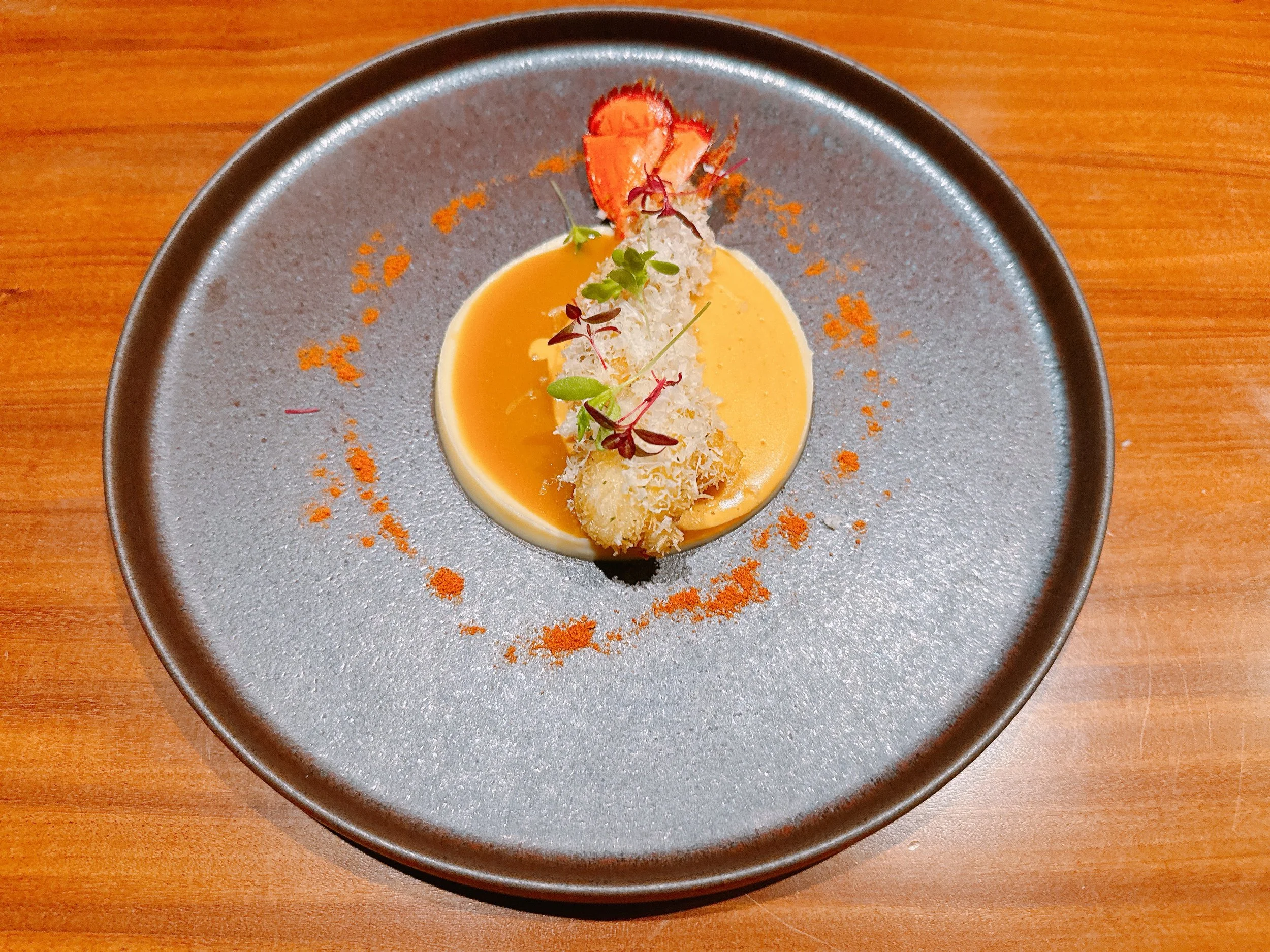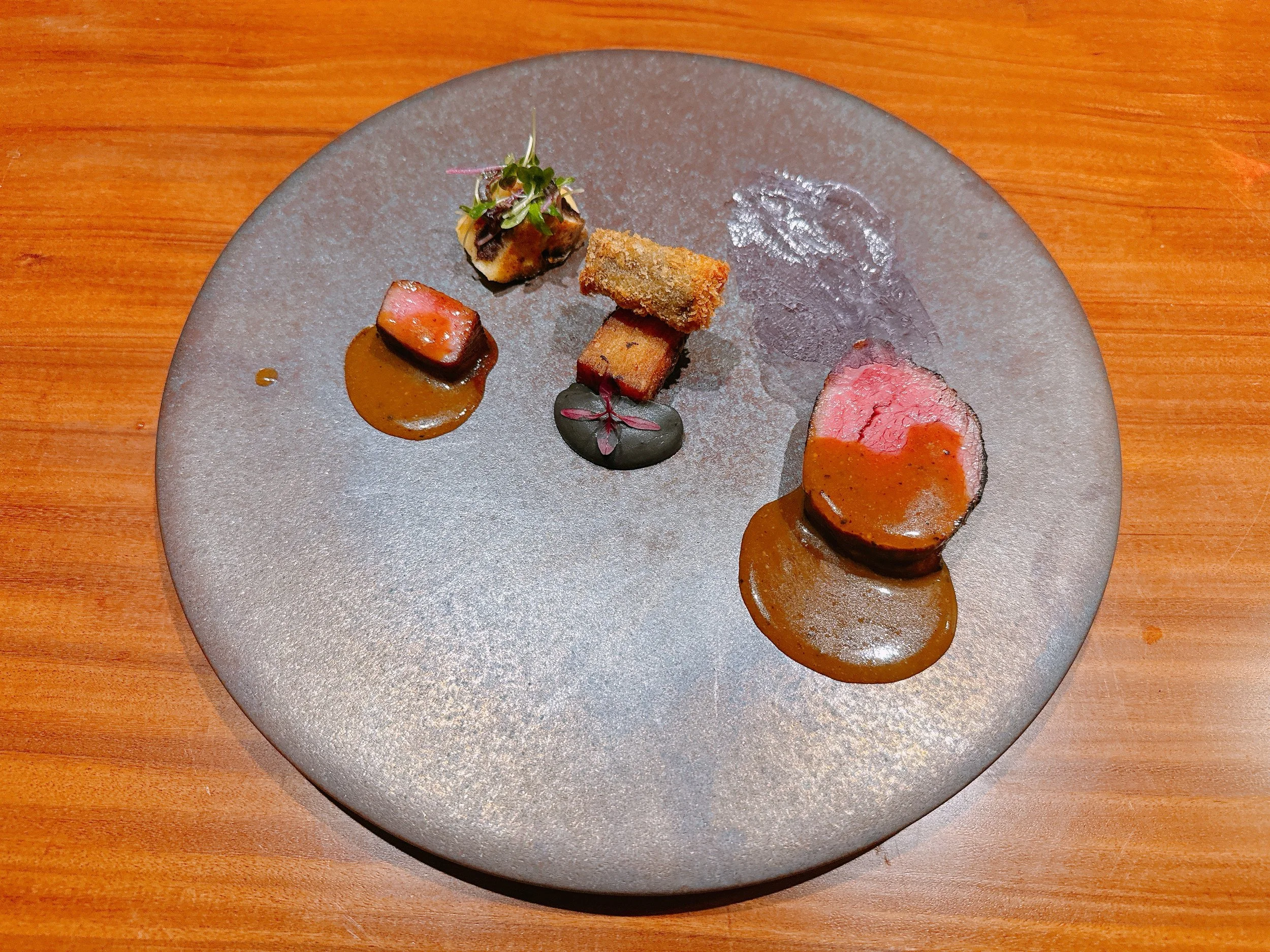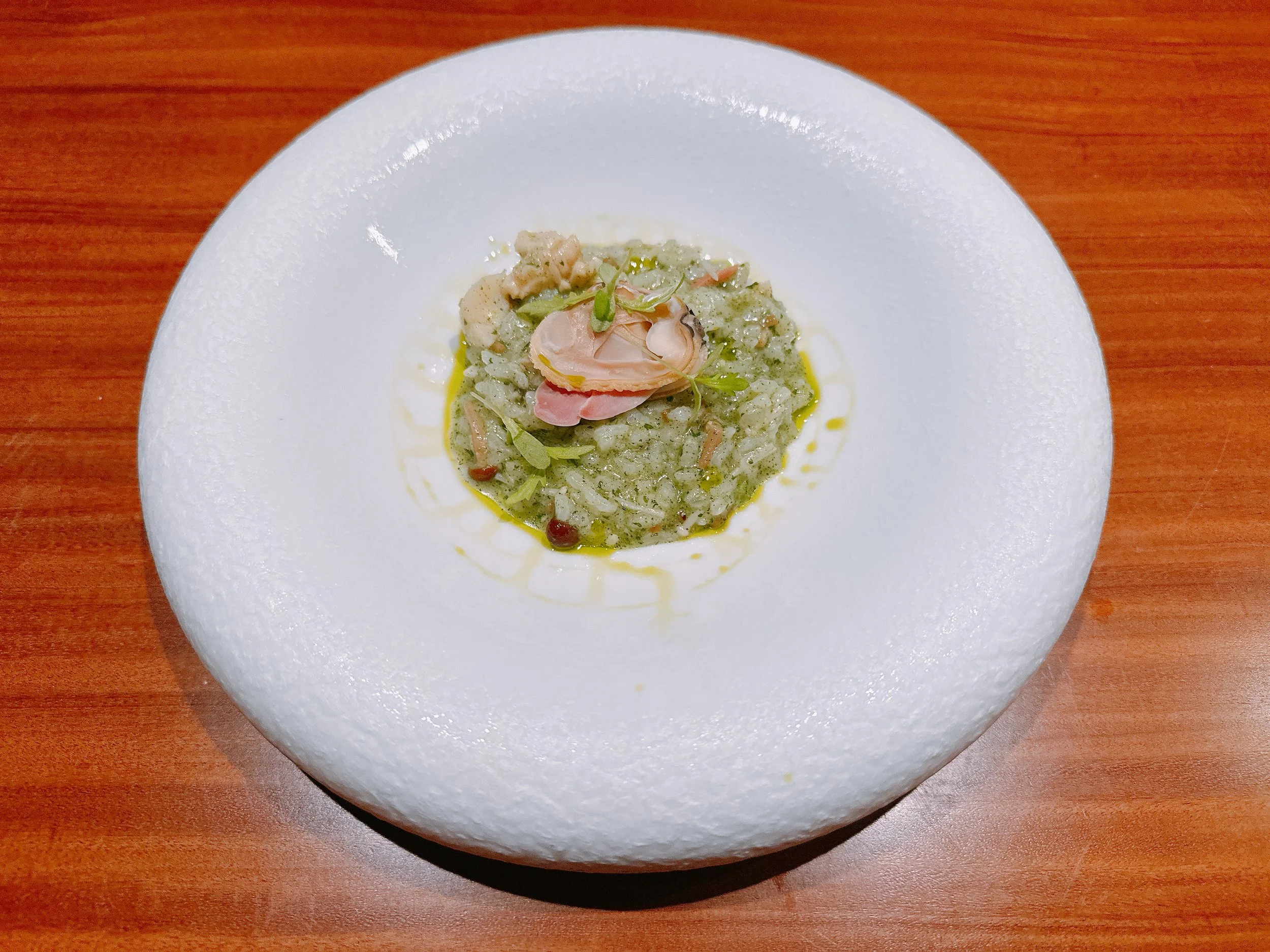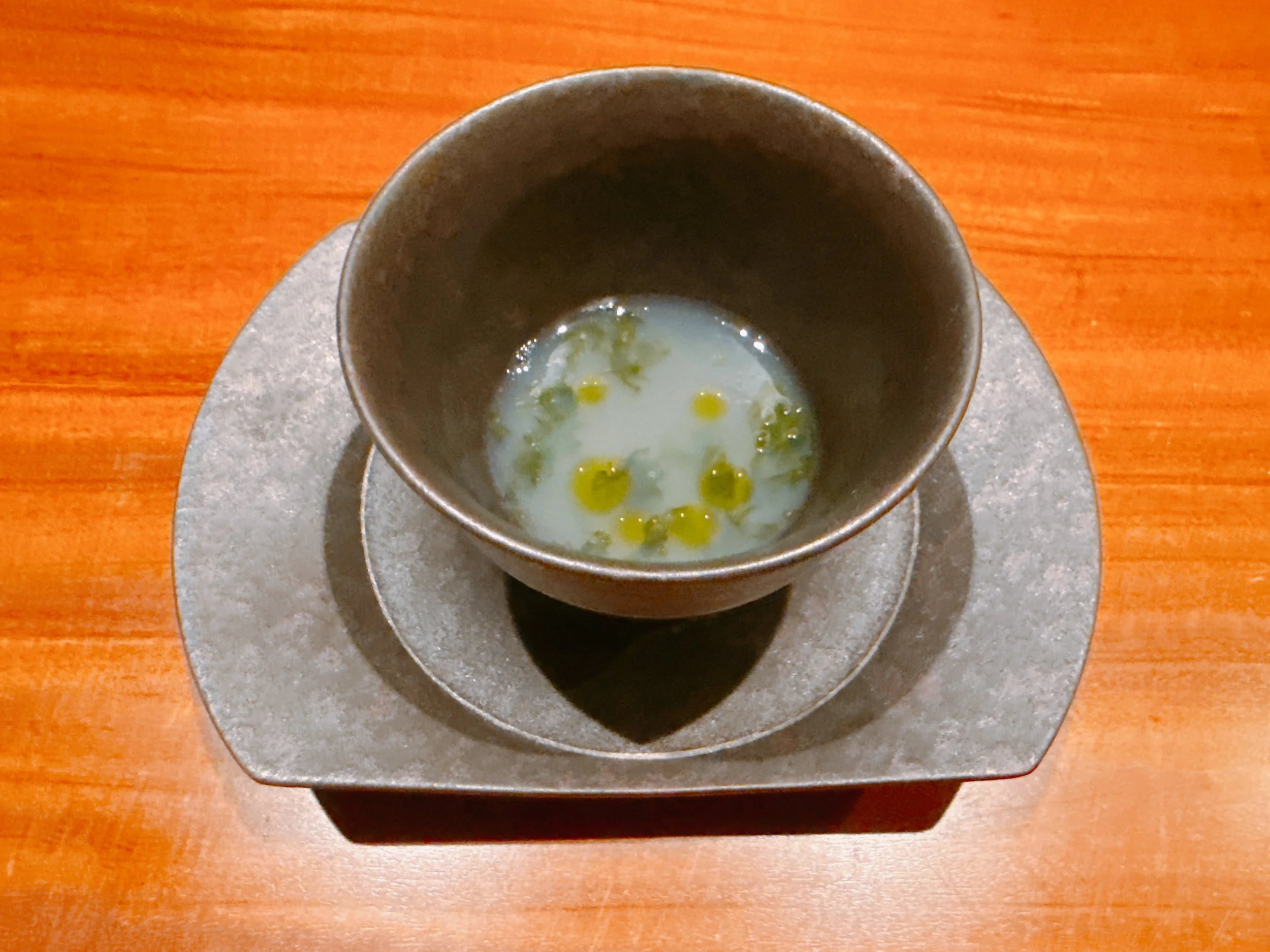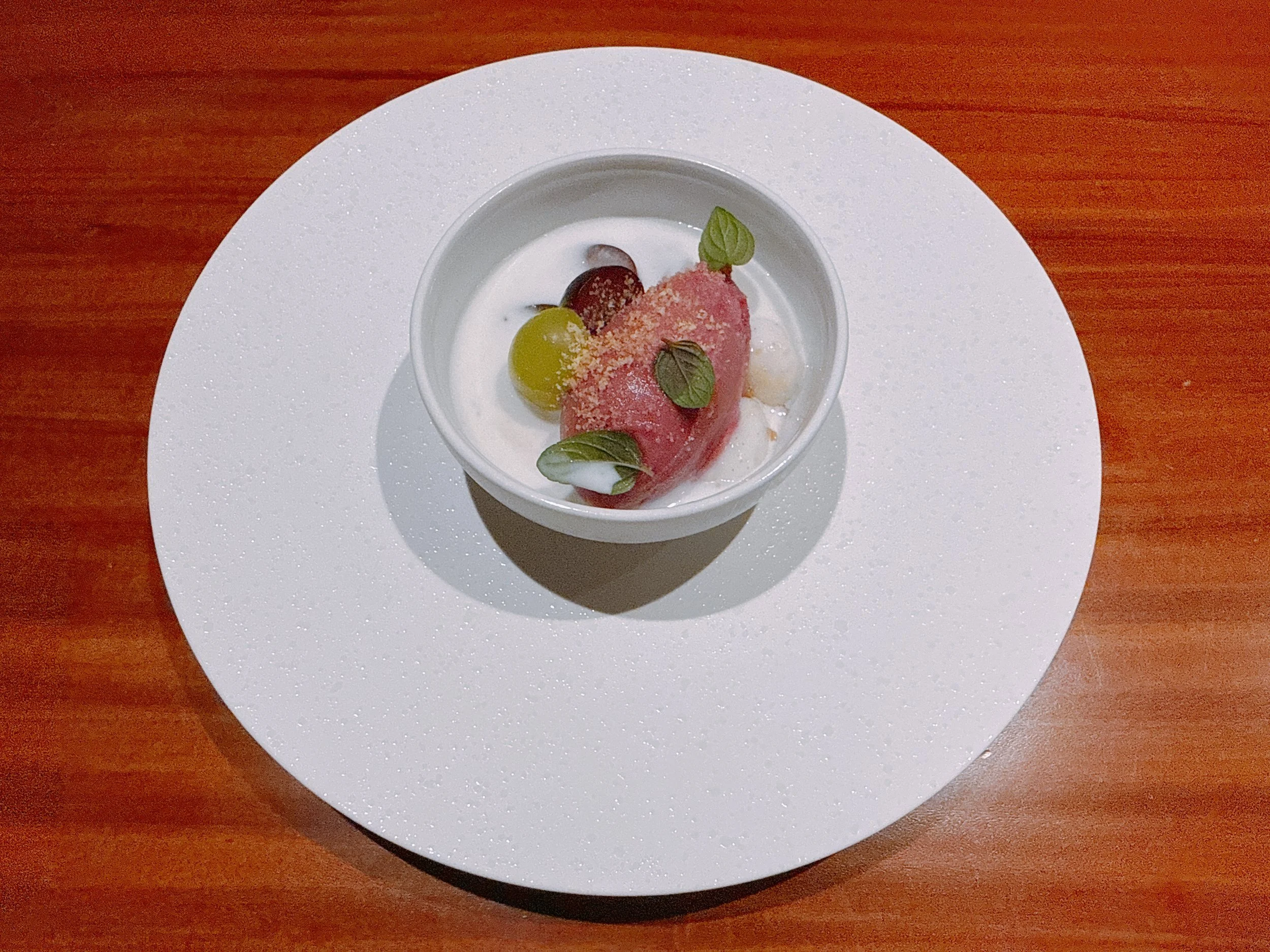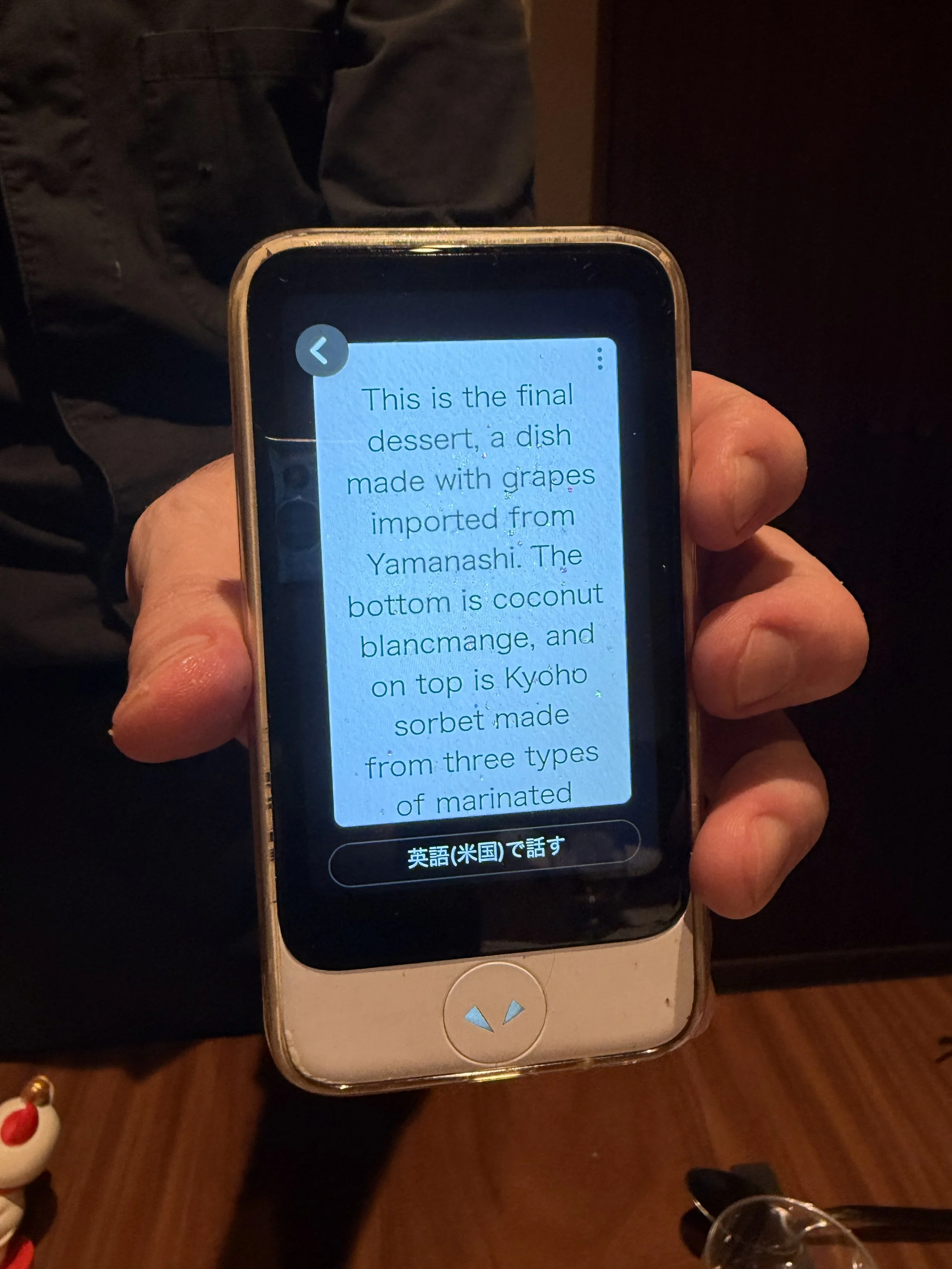Hortensia - Tokyo
Rating: 15/20
Where: Tokyo, Japan
When: Dinner for 5 on 1 November 2025
Cost per Person: Tasting menu 25000 JPY ($165), Wine pairing 15000 JPY ($100)
Accolades: 1 Michelin Star
Why: French cuisine with some nods to kaiseki; an amazing beef dish
“Hortensia” is a French restaurant in Tokyo, just a short walk east of the city's glitzy Ginza district. The area around Hortensia feels more residential, with lots of apartment buildings. The restaurant itself is located inside an office tower, with the building’s occupant index being the only sign that we had come to the right place. After we took an elevator up one floor, we were deposited right next to the action: the center piece of the restaurant, a counter facing the open kitchen. The decor was modern, with no white table cloths in sight. Since we were a group of five, we had chosen the adjacent private dining room. The food was the same, but we missed out on the excitement of seeing the chef in action.
A single tasting menu was on offer, along with either a six-glass wine pairing or a three-glass wine flight (the latter with one glass each of sparkling, white, and red). Somewhat unusually for a French restaurant, only one of the paired wines was from France - the others were from from Japan and South Africa (two wines each), and from Greece. The wines ranged from so-so to ok, meaning that ordering a good bottle might actually be a better choice.
While there was an English menu (see below), the staff unfortunately didn't speak much English themselves. Instead, they employed translation apps to introduce the dishes: our server would dictate each dish description in Japanese and then play the resulting English translations back to us. I took photos of the written translations, giving me the curious feeling of seeing subtitles for our dinner (see the dessert course below for an example).
The first appetizer was a cold soup made from tomatoes that was topped with lobster meat and a coconut sorbet. The tomatoes definitely were the dominant flavor here, while the sorbet added a bit of sweetness and creaminess. The lobster was fine: slightly chewy but overall tender enough. A dish that felt a bit one-dimensional 14.
Next came a selection of smaller seasonal bites, similar to the hassun course in Japanese kaiseki cuisine. In this case, there were a total of eight little dishes, and we ate them in clockwise order, starting at the top of the photo. The first dish featured a mochi made from fugu roe - presumably a part of the fish that's less likely to be fatal? It was topped with a clam and a jelly made from the clam’s broth, seasoned with sudachi. This dish had a nice flavor, but the clam was extremely (!) chewy - oof 14. Next, a dish based on uni (which appeared as a “pudding”, an espuma and as itself) and a winter melon sauce. Again, there were good flavors here: the uni was nice, but the creamy sauce was more subtly flavored 15. A spherified corn soup sat on top of a thin cracker. And that description pretty much says it all: for better or worse, this tasted simply like a sweet corn soup - nothing too exciting 14. Next was a small cake made with raspberries, apples, coffee crumbles and surrounded by dots of a calamansi vinaigrette. Not bad, but oddly sweet compared to the other dishes on the plate 15. A cracker topped with a goat cheese mousse and grapefruit jelly was a bit tart 14. Inside a spring roll wrapper were potatoes and marinated sardines, and the whole was topped by a ravigote sauce made with young ginger. The cracker had a light crunch, the sardine added a nicely fishy taste, but the filling felt a tad too heavy - a weighty piece of food after a series of lighter bites 15. A beige cube near the center of the plate was a play on monaka, usually a sweet wafer sandwich. Here, the wafer was filled with Parmesan and bacon. At least that's what the chef told us, since I couldn't make out either ingredient when eating this. Essentially, it was a dry wafer enclosing an indeterminate creamy filling 12. Finally, there was a taro/truffle cracker topped with a potato espuma and summer truffles. It was lightly crunchy and quite potatoey, but without much of a truffle flavor 13.
The following dish had lots of different components, but they all had one ingredient in common: hairy crab from Hokkaido. At the center of the plate was a circular stack with three different layers: the bottom one was made from yellow peppers and a hairy crab mousse, the middle one consisted of cooked vegetables and a crab consommé, and the one on top used chrysanthemums and crab consommé. On top of that was some crab meat mixed with apple vinegar and a dollop of caviar. On the left: foam made from crab consommé and ginger. The cream and cracker on the right were both made from crab miso. This dish was quite enjoyable, and the crab preparations tasted fresh; I particularly liked the vegetable and bell pepper flavors. There were lots of different textures, too: creamy, crunchy, meaty. At first, this dish looked like there was too much going on, but the common ingredient pulled it all together nicely 16.
A wedge of lightly toasted bread was served while we were still enjoying the crab course. There was no butter in sight. With minimal crunch and a chewy interior, the bread was not particularly memorable 12.
A filet of managatsuo (butterfish) was served with a variety of accompaniments. It sat on a puree made from white eggplant and vanilla. Next to it was a piece of white eggplant cooked in vegetable stock and ginger juice. A ravioli was filled with hairy crab and there were little cylindrical cuts of kohlrabi and turnip. Tableside, a yuzu-flavored beurre blanc was added to the dish. The fatty fish had only a light flavor by itself - mostly a grilled taste. The ravioli was enjoyable enough with a fishy-tasting filling, and the kohlrabi nicely crunchy, adding some texture. This dish was fine, but felt a bit busy with so many different components. Unfortunately, they didn't share an ingredient, they just all happened to be white, which didn't give the dish the same cohesion as the previous course 15.
Breaded and deep-fried shrimp came with two sauces made from lobster heads: one was a bisque, the other a cream sauce. A powdered spice mix surrounded the shrimp preparation. The shrimp was nicely fried, reminding us of tempura. I particularly liked the shrimp-flavored creamy sauce, and was surprised by how spicy the spice mix was - not bad though. A dish that was maybe not as “fancy” as the preceding ones, but much more focused. And tasty, too 15.
Two cuts of wagyu beef from Hida anchored the following dish: a larger filet on the right, and a smaller cut of beef tongue on the left. At the center of the plate was a potato millefeuille, topped with a piece of breaded and fried burdock root, sitting next to a black sauce made from black truffles and celery. An oyaki dumpling sat on the side, decorated with some herbs. In addition, there was a translucent cracker made from purple potatoes. The sauce poured over the beef was made from veal and chicken stocks, and infused with freshly grated wasabi. Again, this dish had a lot - I'd say too much - going on. Sadly, most of the sides were not particularly exciting. The oyaki was pretty heavy (maybe a 13), the purple potato cracker didn't taste of anything, and the potatoes also didn't have much flavor by themselves - they primarily felt slightly oily (maybe a 12). The burdock root had a solid bite and a nicely crunchy breading, and the black cream might have gotten its coloring from black truffles, but mostly tasted of celery. Which gets us to the beef. That was truly spectacular, cooked perfectly to a medium doneness, with a good texture and not the slightest chewiness. The sauce with its pronounced, slightly spicy wasabi flavor was a lovely accompaniment. If the plate had contained only this beef and the wasabi sauce, this would have been a superbly focused dish in three-star territory (18), but with all the so-so additions, it was much less compelling. Maybe slightly generously 16.
Had we been in France, the beef would probably have been the last savory course, but in a nod to Japanese cuisine, we were served a final risotto seasoned with egoma powder (Korean perilla) and containing little mushrooms and three different kinds of clams. The rice was quite good, with a nice herbal flavor. The clams were a mixed bag: some melted in your mouth, but a large one on top was extremely chewy and almost a chore to eat. Ignoring that particular clam, this was a 15. The risotto was accompanied by a broth made from the ingredients used in the previous courses (except for the beef). The soup was bursting with flavors, some coming from herbs and seaweed, but it was also pretty salty. An intense complement to a much tamer rice dish 16.
The final course of our dinner was a dessert. A coconut “mochi” came with a vanilla-flavored coconut mousse, fresh grapes and a sorbet made from different kinds of grapes. A nice mix of tasty ingredients: yummy mochi, a good mousse, all lightened up by the fresh grapes and the sorbet 16.
Overall: French cuisine with some Japanese ingredients and a menu structure that made some nods to kaiseki cuisine. The best dishes focused on a single ingredient that appeared in multiple different preparations. Other courses felt too busy, combining components that seemed to have little to do with each other. While some of these dish components might have been good (or, in case of the beef, absolutely spectacular), others were much less successful. In those cases, less might have been more 15.
